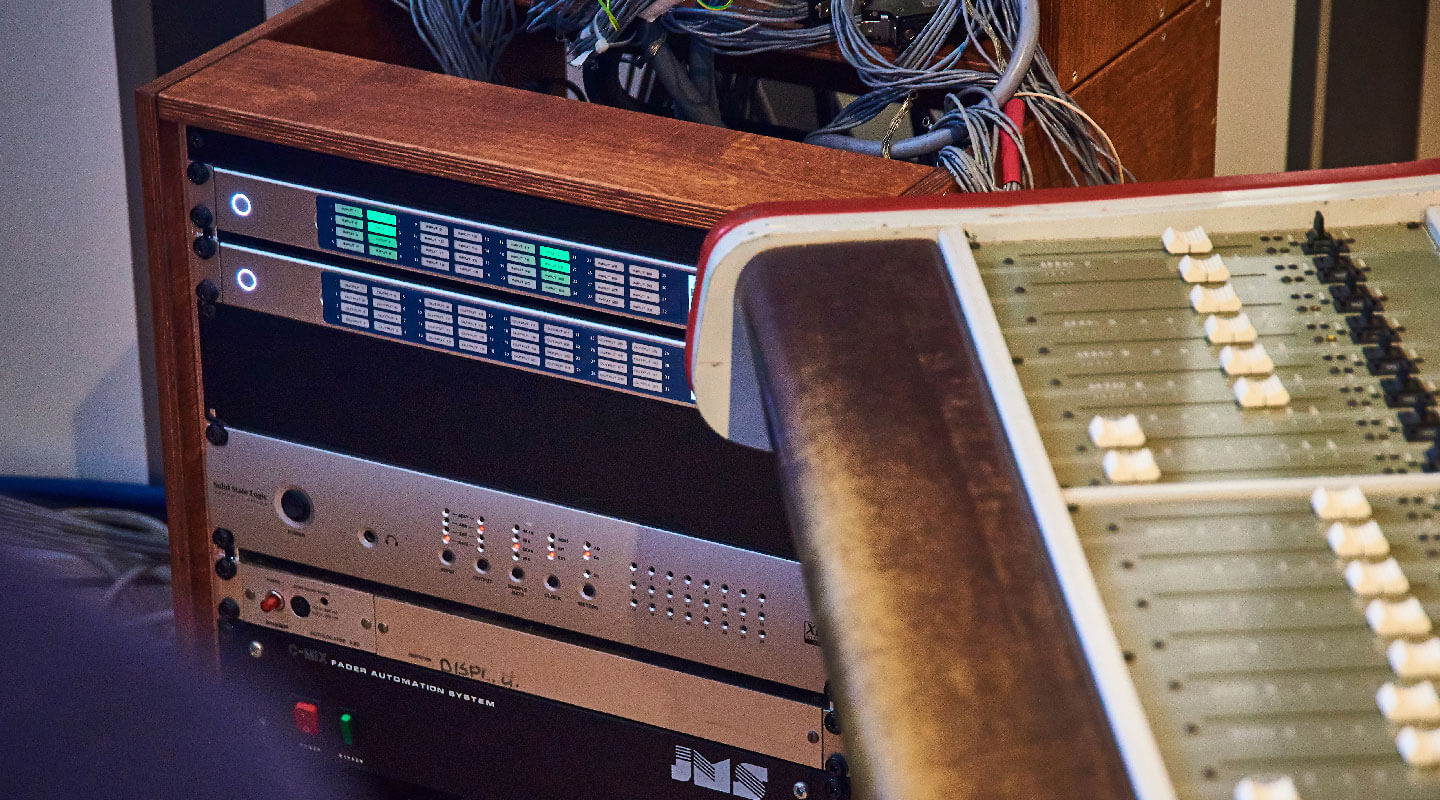
M-32 Pro AVB Series -Analog meets Digital
Opened up 2010 in Hamburg, Yeah! Yeah! Yeah! Studios produce band recordings as well as original compositions for different artists, movies and advertisement. Matthias Kieslich one of the recording engineers next to Dennis Rux the founder of the Studio, gives us an inside view of his Control Room.
Center of the studio is the unique 32-channel Polygram console from 1978, designed for the Wisseloord Studios in Netherlands. This desk is setup as typical split desk for recording and monitor channel design. Two desks included in one, perfect for capturing analog sources like tape recording machines and the use of a DAW. Many productions are produced in a complete analog way without the connection to a DAW or as a part of the digital board. Only processed with external analog compressors or reverbs, like the EMT 240 Gold foil plate reverb or BX 20 spring reverb.
RME Audio M-32 Pro - Full +24 dBu range perfect for high-end conversion of old analog outboard gear
„Nonetheless many our productions need help from the digital world, to convert analog to digital format.“ For maximum compatibility with a variety of analog hardware, the individual channels of the M-32 AD Pro and M-32 DA Pro can be operated with different line levels - each with full resolution of the converters. Besides +19 dBu and +13 dBu, the new M-Series is one of the few solutions available on the market that also allows working with the SMPTE® recommendation of +24 dBu at 0 dBFS.
„Now with the new M-32 Pro we have no loose of dynamic range or headroom, while we converting our analog signals. So whatever gear we use, we can adapt the dBu range of every single channel with the M-32 separately“
„I just want to have my original analog signals of my outboard gear, without colorizing or influencing the audio signal.
The M-32 Pro is providing us the best technical specs we need and its complete transparent and invisible in the sound flow. It offers a perfect signal-to-noise ratio of 120 dB(A) with extremely low THD values, which places the converters in the reference class.“
Back